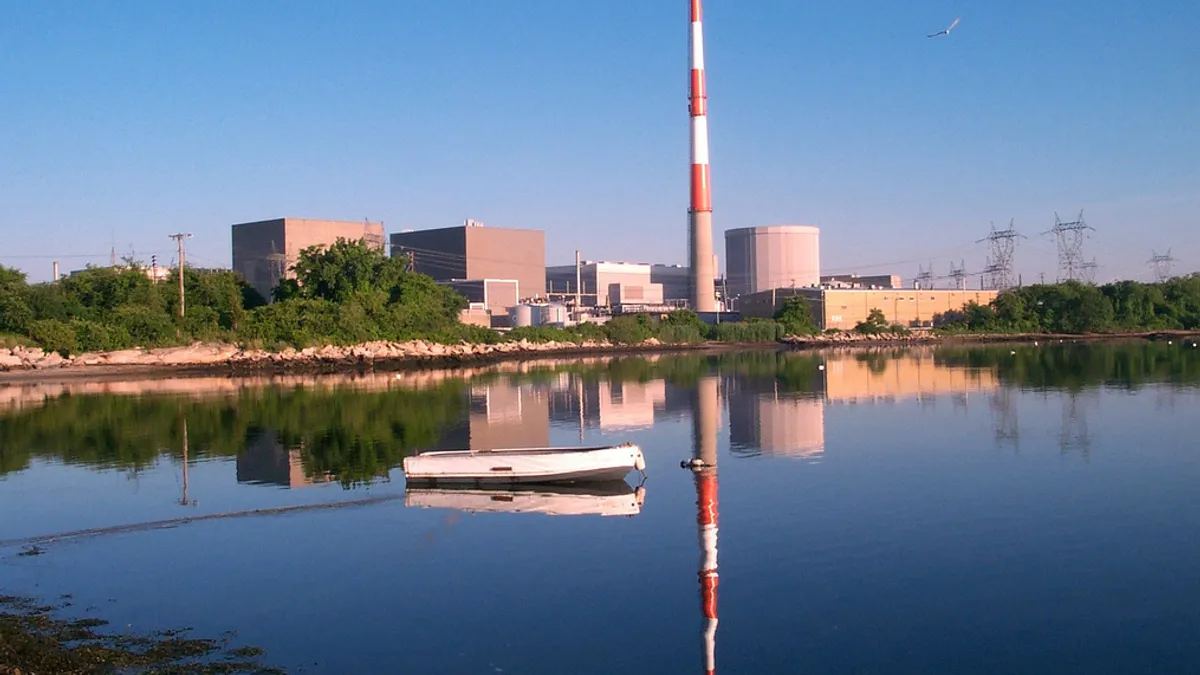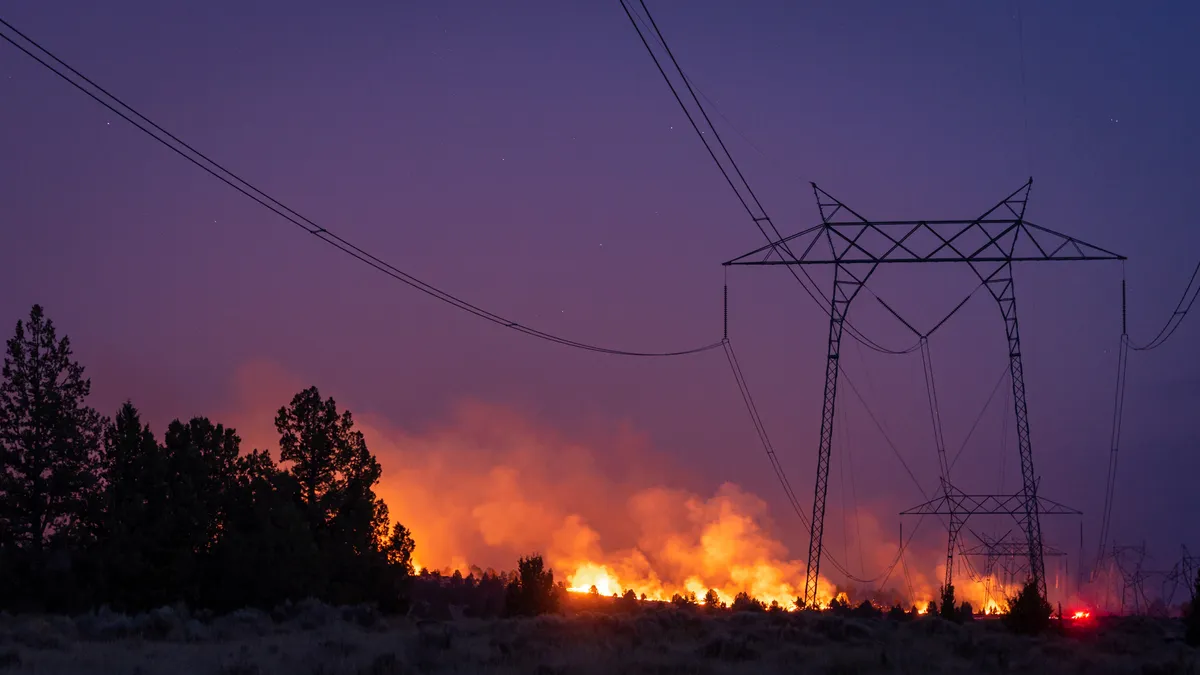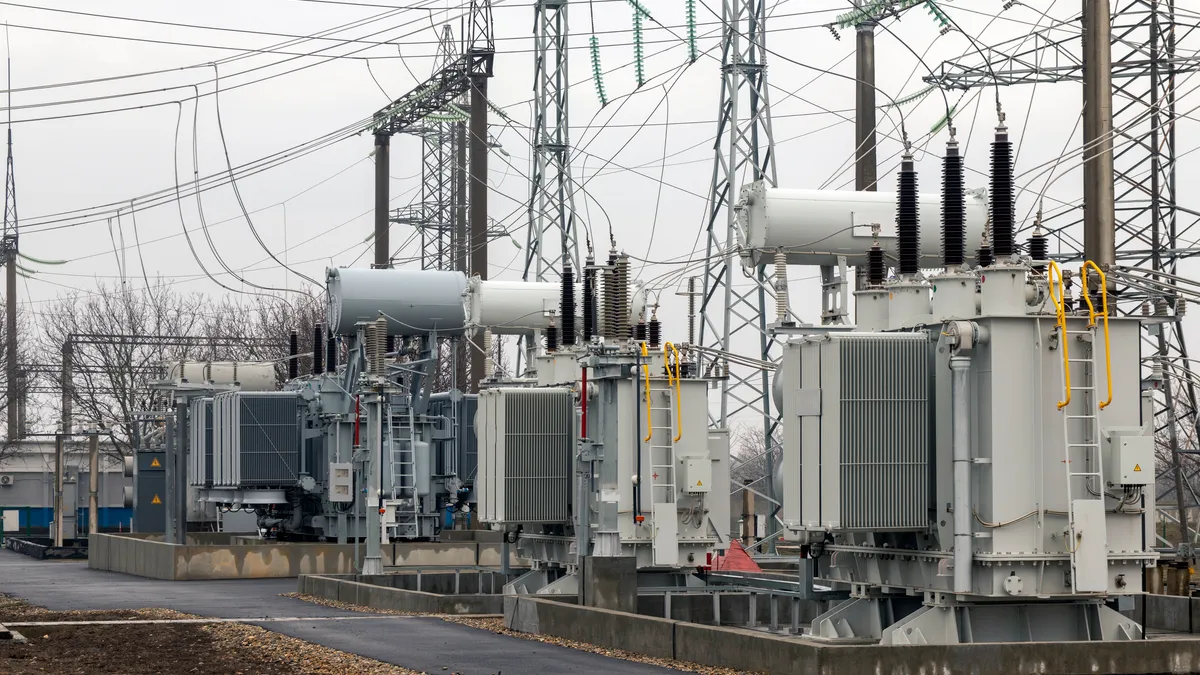The Connecticut bill designed to offer a lifeline to the state’s sole nuclear power plant, Dominion Energy’s 2,110-MW Millstone in Waterford, is moving forward.
The bill appears to have gained strong legislative support, even as it has attracted a string of opponents.
On March 21, the General Assembly’s Joint Energy and Technology Committee approved the bill, SB 106, in a 17-7 vote with one abstention. The main components of the bill call for the creation of a solicitation for nuclear resources and a doubling of the state’s renewable portfolio standard target to 40% by 2040 from 20% by 2020.
The bill now goes to the Senate.
Last year a prior iteration of the current legislation, SB 344, won unanimous approval in the Senate, but the legislature adjourned five days later before the House could take up the bill.
The main difference between the two versions of the legislation is that SB 344 was focused on creating a solicitation for nuclear power while SB 106 calls for a broader solicitation process and a more expansive RPS.
Sen. Paul Formica (R), a sponsor of both bills, called SB 344 “a bridge to the renewable future.” With SB 106, he said, “We are beginning to build those bridges.”
The Senate’s unanimous passage of SB 344 last year, combined with recent the bipartisan committee vote, suggests that SB 106 could win approval in the House, as well, says Timothy Fox, vice president at Clearview Energy Partners, an energy focused research firm.
In a research note, Fox said the committee vote is “a potential bellwether for how the whole Connecticut House would vote, supporting our current view that the effort may have sufficient bipartisan and bicameral support to pass this year.”
Fox cautioned, however, that the bill still has a way to go and progress could be slowed by amendments. In addition, he says the Governor’s view of the bill is still unclear.
Bill still evolving
The bill already has seen at least one change in committee. A recent version of the bill called for the state’s Department of Energy and Environmental Protection (DEEP) to issue a solicitation for Class I renewables that includes resources that “emit no pollutants and have a nameplate capacity rating of twenty megawatts or more and can achieve a combined project total capacity factor of at least sixty per cent.”
That is criteria very few, if any, renewable resources can meet. But nuclear facilities like Millstone would be included, as they routinely notch capacity factors above 90%.
Formica says the language requiring a 60% capacity factor was struck in committee. The original language, he says, was meant to encourage baseload renewable energy by combining resources such as wind and solar power with energy storage.
“That was dropped for the moment,” Formica said, but “storage needs to be addressed,” most likely in separate legislation. But he says the aim of the bill remains the same: “to preserve baseload capacity and to create new baseload capacity and to wean ourselves off” energy resources that damage the environment.
Millstone provides 50% of Connecticut’s power capacity and as much as 40% of New England’s electricity generation. If Millstone were to close, Formica argues that renewable resources would not be in a position to replace the lost capacity. That capacity would be replaced by natural gas-fired generation, and “costs would more than double and the environment would suffer,” says Formica.
Some studies show that could be the case. “If you remove baseload power the supply curve shifts to he left, goes up, and prices rise,” says Dean Murphy, a principal at Brattle Group.
He cited a paper Brattle did for construction and labor groups that found that retiring New York State’s upstate nuclear power plants would increase wholesale power prices by about $10/MWh, adding about $1.7 billion to customers’ bills on an annual basis. Murphy expects the effect, if not its magnitude, would be similar were Millstone were to close.
But consumer groups and some environmental organizations argue that the reason Dominion wants a PPA in the first place it because it would bring in more money. And, they say, those higher costs would ultimately be passed on to consumers.
In a quarterly earnings call, Dominion said it expects to see a $10/MWh to $12/MWh reduction and realized energy prices this year compared with last year, which could lower earnings by $95 million to $125 million.
If, instead, Dominion can enter a solicitation and win a five year power purchase agreement for Millstone’s output, it could improve the plant’s financial profile.
Even though the current bill only calls for a solicitation that would cover about half of Millstone’s 16 million MWh annual output, that would be enough to make a difference, said Dominion spokesman Ken Holt.
“The PPA would be above market, really. It would make a material difference in our view,” concurred UBS analyst Julien Dumoulin-Smith.
But Holt argues that rates would go down for consumers. “The bill clearly states that the [PPA] rates would be reviewed [by the state’s regulatory agencies] and won’t be accepted unless they benefit consumers,” he said.
Competition rules
States and utilities often use competitive solicitations to ensure they are acquiring the resources at the lowest cost. But the structure of the solicitation as it now stands in SB 106 raises questions about that process.
The bill calls for DEEP to issue “one of more solicitations” subdivided into three classes: nuclear power generating facilities that are “fully relicensed” to operate through 2029, trash-to-energy facilities, and biomass facilities that entered service on or after Dec. 1, 2013.
There are only two other nuclear power plants in New England, Entergy’s Pilgrim plant in Massachusetts, which is set to close May 31, 2019, and NextEra Energy’s Seabrook station in New Hampshire.
Entergy has no plans to bid Pilgrim into the solicitation, should it be passed into law says spokesman Patrick O’Brien.
NextEra filed 20-year license renewable application for Seabrook in 2010 that is still pending before the Nuclear Regulatory Commission, which would knock it out of running for the solicitation.
That could give Millstone an advantage in the solicitation because it would be competing against trash-to-waste and biomass plants that would likely have higher operating costs. If that is the case, it could open the solicitation process to challenges from regulators or consumer groups.
Formica says the details of the bill could change as it moves through the legislative process, but the important thing to remember, he says, is “we are trying to create opportunities for Connecticut.”
In addition to a need for baseload zero emission generation, the state has to find a way dispose of its waste in light of more restrictive state laws on trash disposal. “We are trying to solve two birds with one stone,” Formica said.
But the competition issue could raise concerns among the regulators that would have to sign off on the solicitation results. That mechanism “could use some strengthening,” says Francis Pullaro, executive director of RENEW Northeast.
RENEW Northeast’s main concern with SB 106 is that the nuclear provisions “could crowd out the appetite” for new renewable energy projects.
Instead of using the solicitation “bridge,” Pullaro says the legislature should instead raise the state’s RPS target to 50% by 2030. There is, in fact, a separate bill, HB 6307, now under consideration that would do that.
The Rorschach test
Aside from providing a transparent pricing mechanism, Connecticut’s solicitation process could also serve another purpose. It could provide a buffer from the legal challenges that similar efforts in states such as New York and Illinois are attracting. There, critics argue that zero emission credit (ZEC) mechanisms are out-of-market solutions that run counter to federal law.
The seminal case in that respect is Hughes v. Talen Energy Marketing, in which the U.S. Supreme Court ruled unanimously that Maryland’s in-state generation program encroached on the Federal Energy Regulatory Commission’s exclusive authority over interstate wholesale electricity rates.
Maryland’s program relied on a form of contract for difference that referenced PJM Interconnection prices. The architects of New York’s ZEC took pains to avoid those legal entanglements, but generators in New York still have challenged the state’s ZEC, calling it an “existential threat” to wholesale power markets.
Illinois’ ZEC is also facing challenges. The PJM Interconnection recently filed a motion in federal court opposing it. And the Federal Energy Regulatory Commission has scheduled a May technical conference to look at state measures such as ZECs.
“Hughes is a little bit of a Rorschach test,” says Rob Rains, an energy analyst with Washington Analysis, an institutional research firm. Different parties see different things in Hughes, he explains. But the “dicta in Hughes is narrow,” says Rains. It leaves the door open for states to craft energy policies using mechanisms other than contracts for differences, such as property tax rebates or direct subsidies.
Many legal experts say state RPS programs and renewable energy solicitations rest on a well established legal precedent that give states have the right to determine their own energy policy. In that respect, says Rains, “I think Connecticut is on safer ground” than ZECs in other states.
That, of course, assumes that the bill is voted into law. It appears to have legislative momentum, but it also has some significant opposition.
On Feb. 7, the Joint Energy and Technology Committee of Connecticut’s General Assembly considered a single sentence version of SB 106. During the hearing, 12 of the 17 parties that filed testimony opposed the measure. Much of the opposition was based on the costs the nuclear PPA would impose on consumers. But analysts also note that SB 106 has yet to have a full public hearing, and opening that door could drain some of the legislative support the bill has enjoyed to date.
“Connecticut’s solicitation approach appears to have garnered some opposition from consumer advocates,” says Fox. “This poses risk on the front end, i.e., the bill not being enacted, but may mitigate risk on the back end, i.e., judicial scrutiny.”





















